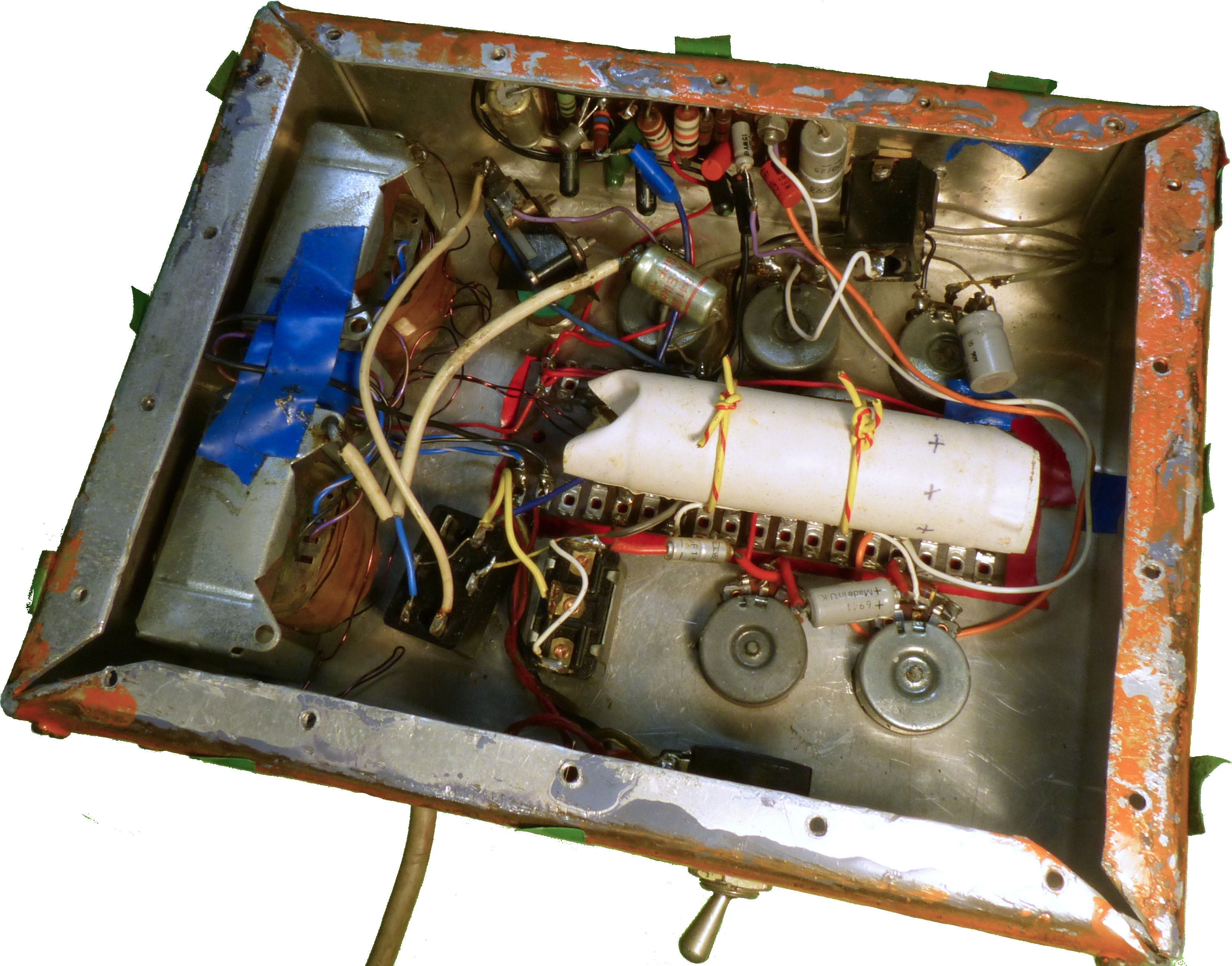THE ONKLETATOR
A mini-synth used by Cycle
An Icon its electronics and the 3D animation.
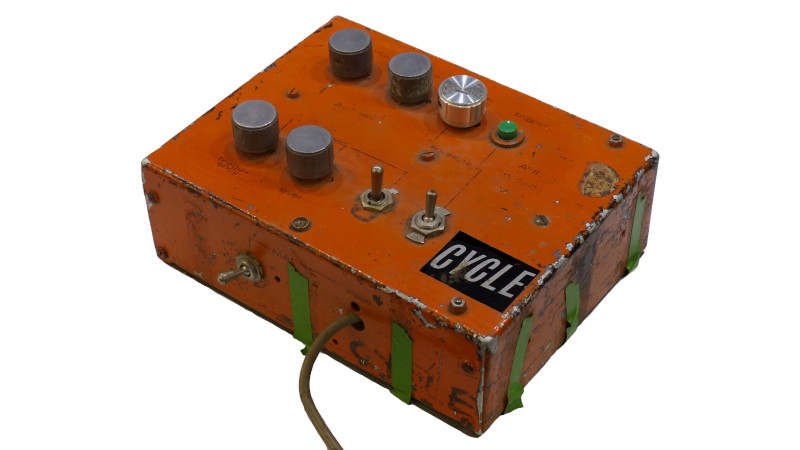
All about Onkletators
When I joined Cycle in 1973, roughly years ago, they were using an oscillator combined with a WEM Copicat to produce great sounds like those on "Tomorrow's World" from the "Cosmic Clouds" album published by Rise Above Records. Click *here for a YouTube link.
We liked to experiment with different sounds and we built, bought, or borrowed a number of interesting items, for example, a synth with a keyboard built using Dewtron modules, a wind sound effects machine that I made, a synth based on the three part "Electronic Sound Synthesizer" article published in "Wireless World", August through October, 1973 (click *1, 2, 3 for the articles at worldradiohistory.com), and of course, the Onkletator. The Onkletator was responsible for the more complex oscillator sounds on "Dawn of a New Life". Click *here for a YouTube link, it comes in at ~2 minutes in the clip.
The Onkletator was given its name by one of the Roadies who said that if anything technical went wrong it was always a problem with the Onkletator, the technical equivalent of an oojamiflip, or a doohdad, or... you name it. Anyhow, Onkletator stuck and every new electronic device that we made was an Onkletator Mark N.
*(External links working at the time of writing, if not please email me, thanks.)
Design and Build of the Onkletator
The actual Onkletator was built entirely from scrap, from components retrieved from other electronic devices, old HiFi's, a calculator built entirely from discrete components (no integrated circuits in sight!), industrial controllers, etc... We knew a thing or two about recycling in those days.
The design of the Onkletator was a combination of two oscillators, a Voltage Controlled Oscillator, VCO, to produce the main tone, and a Low Frequency Oscillator, LFO, that modulated the VCO to make chirps, sweeps and wobbles (all important technical and musical terms! 8-)
You can see in the block diagram shown below: there were switches, knobs and a push button to craft the sound into something useful and, combined with the amazing power of Charlie Watkin's Copicat, the result was quite astounding/interesting, certainly for years ago. We thought it was neat!
Onkletator Internals
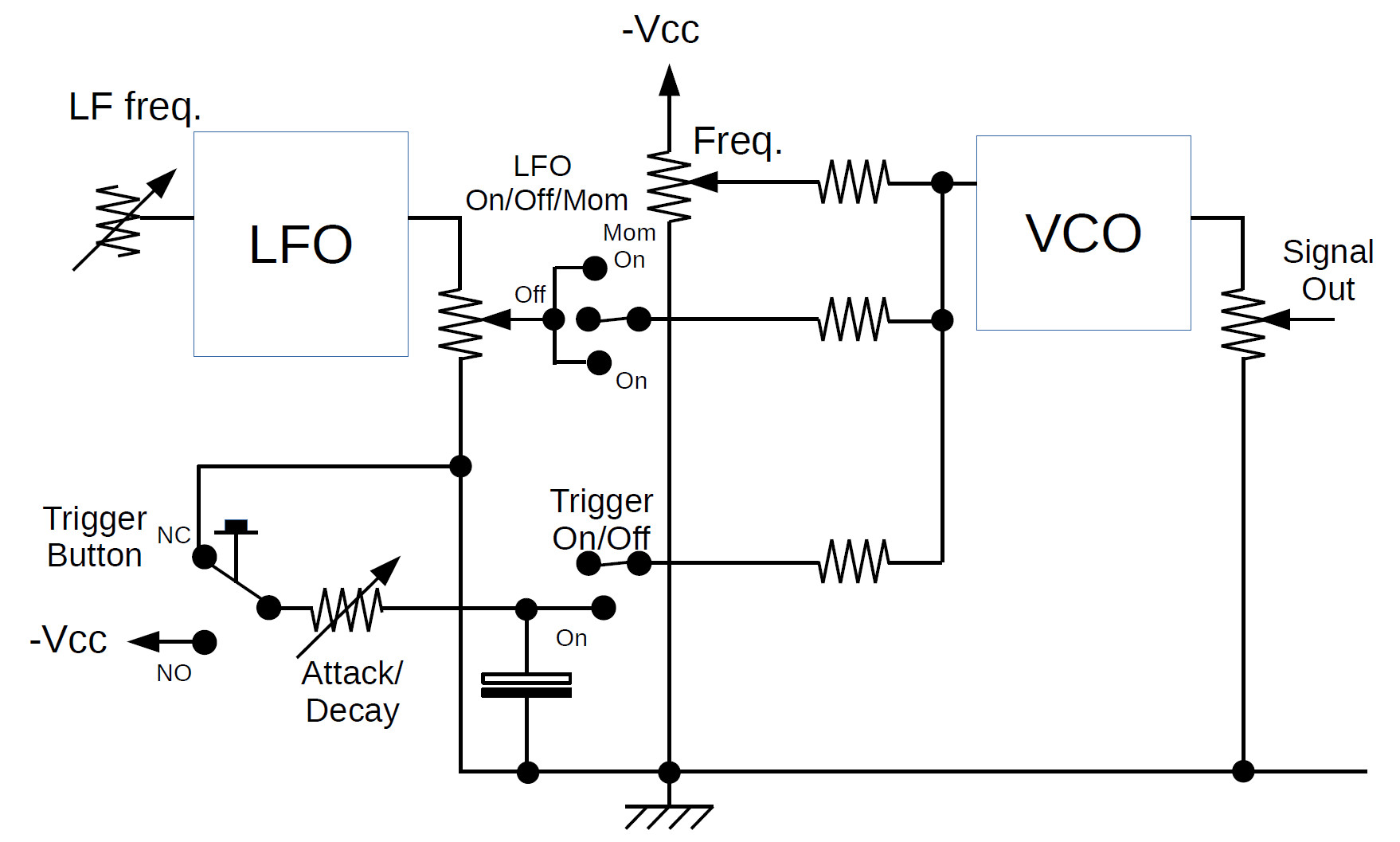
The picture shows the main VCO oscillator on the right, and the LFO on the left. There are variable resistors and potentiometers to adjust the influence of the LFO and the trigger push button on the VCO. Press the push button and the input voltage magnitude and the frequency would rise as the capacitor was charged, release the push button and the capacitor discharged lowering the frequency. The rate at which the change occurred was determined by the settings of the various resistors and the value of the capacitor. The output level from the VCO is controlled by a potentiometer, pot. Note that because the device uses PNP transistors for most of the circuitry the supply is negative, -ve, relative to ground.
The picture below is of the insides of the Onkletator. On the left are two power transformers for the Power Supply, PSU. The white thing in the middle is the main smoothing capacitor for the PSU.
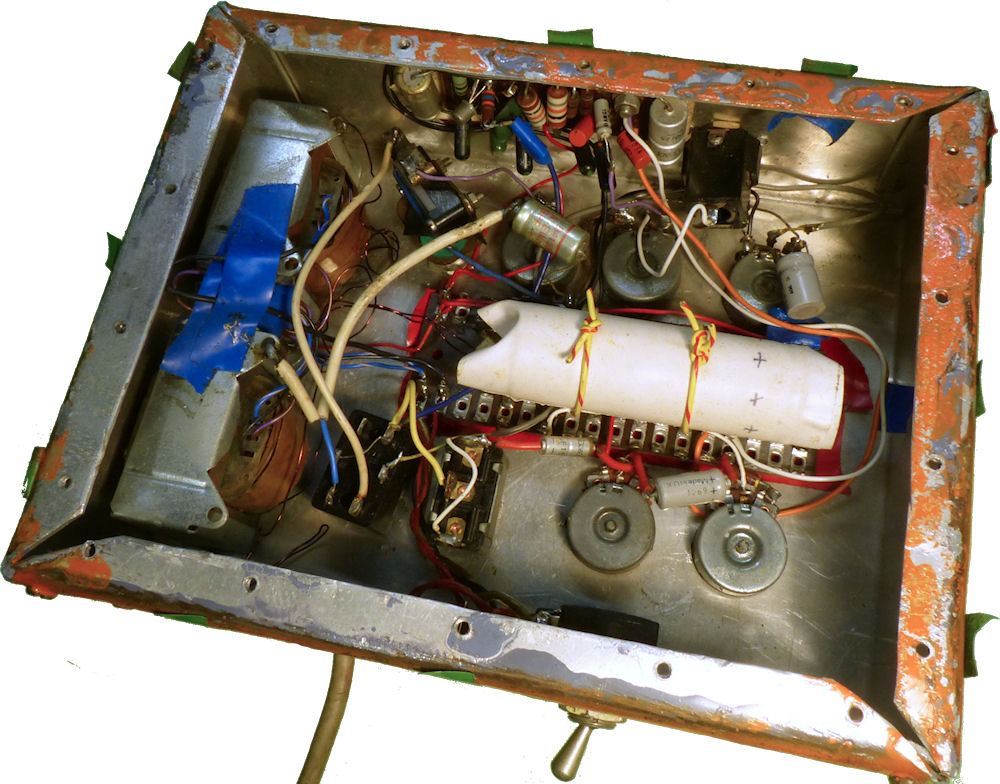
In the lower half of the picture on the outside of the box is the mains power lead and the power switch. Inside, from left to right, are the trigger on/off switch, the LFO/Pulse Oscillator on/off/momentary switch, and the the LFO level and the LFO frequency pots.
In the upper half of the picture, above the capacitor are, from left to right, the trigger push button, the attack/decay control pot, the VCO output level pot, and the VCO frequency pot.
Above that, on the side wall of the box is the main oscillator board, and the output jack to connect the device to an amplifier, mixer, or WEM Copicat.
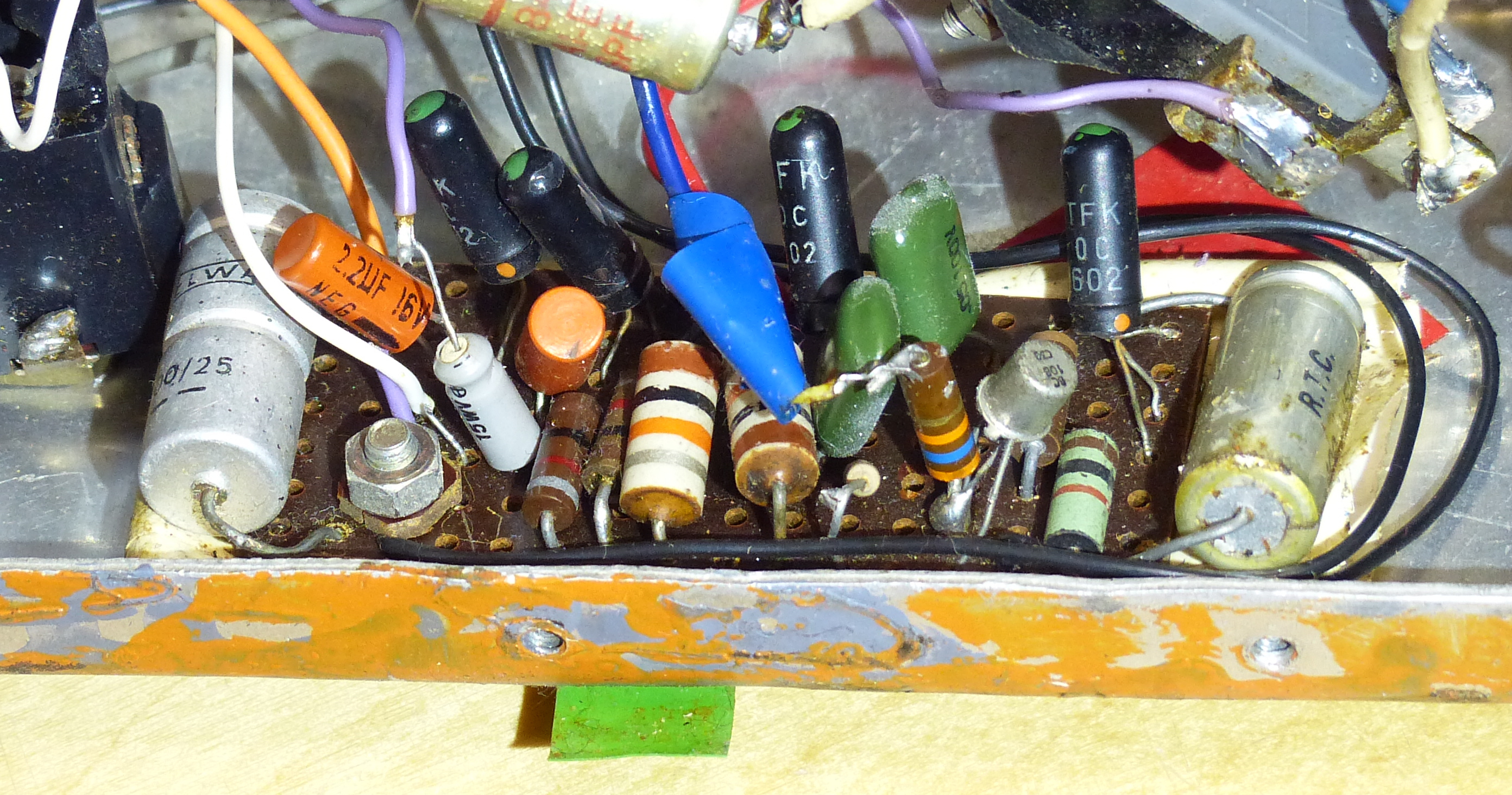
Onkletator Main Board
At each end of the main board are power supply decoupling capacitors that attempt to keep the two oscillators from interfering with each other via the PSU. At the back are four OC602 Germanium (you don't see those much nowadays) PNP transistors. Those little beauties are encapsulated in glass tubes painted with matt black paint to keep the light out. If you scrape the paint off they make great photo transistors. Both the LFO and the VCO are multivibrators; the timing capacitors for the LFO are 2.2 µF, the VCO timing capacitors are 0.05 µF. The transistor providing the VCO function (or even current control!) is a BC108 silicon NPN transistor in a neat little metal can towards the right. The bits that bring back the most memories are the white ceramic tubes with the rings coloured Brown, Black, Orange, Silver, (10k Ω 5% tolerance) solid carbon resistors. They came from an old valve radio from the forties that belonged to my parents. One of the first pieces of electronics that I stripped for bits.
The Onkletator Today
Although the Onkletator is more than years old (older than the now scrapped Concord) it has recently been refurbished and is now functioning as an intergalactic cargo transporter.
The Onkletator returning to Earth for a gig
(click on the image to open a new tab with a Full HD version of the video with audio)
For more information about the Onkletator and 3D animation take a look here.
The Onkletator Today — A Footnote
My middle daughter's first daughter is as bright as a button, and as sharp as a razor. She knows her tree creeper from her fire crest and asks incisive questions about all sorts of things.
She likes to come up to my workroom when she is with us to play music with synths and stuff and she is familiar with my animations.
I showed her the video of the Onkletator flying through space and the van leaving it to fly down to Earth. I also showed her the real Onkletator and showed her its inside workings with its birds nest of wiring.
She looked a little quizzical and asked, "Its not very big, how do you get the van inside?"
Have fun,
Andy
